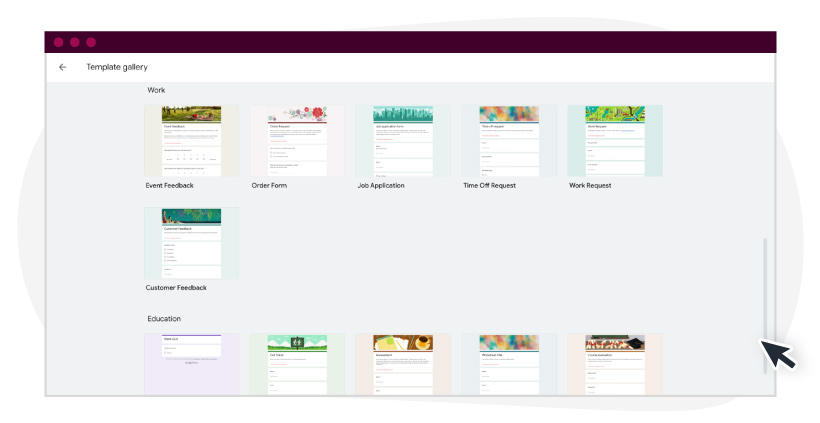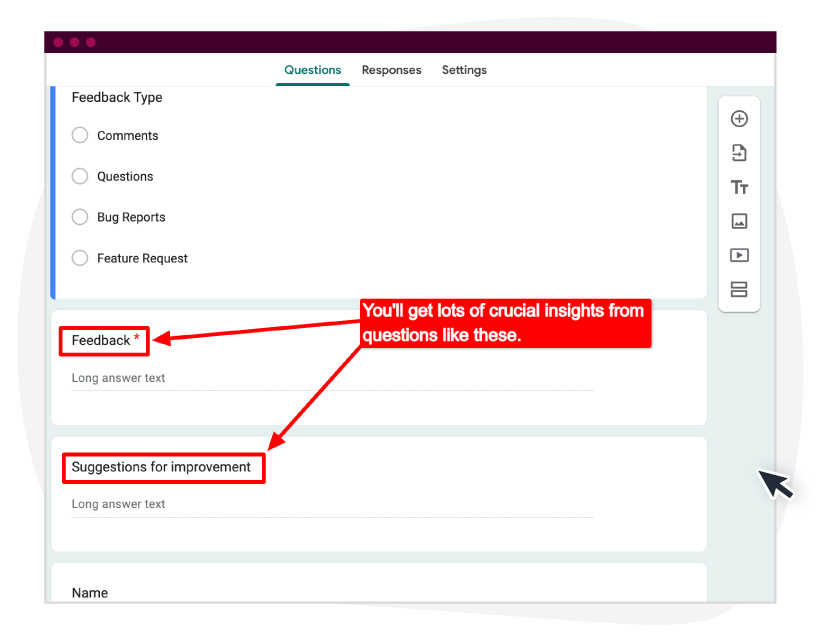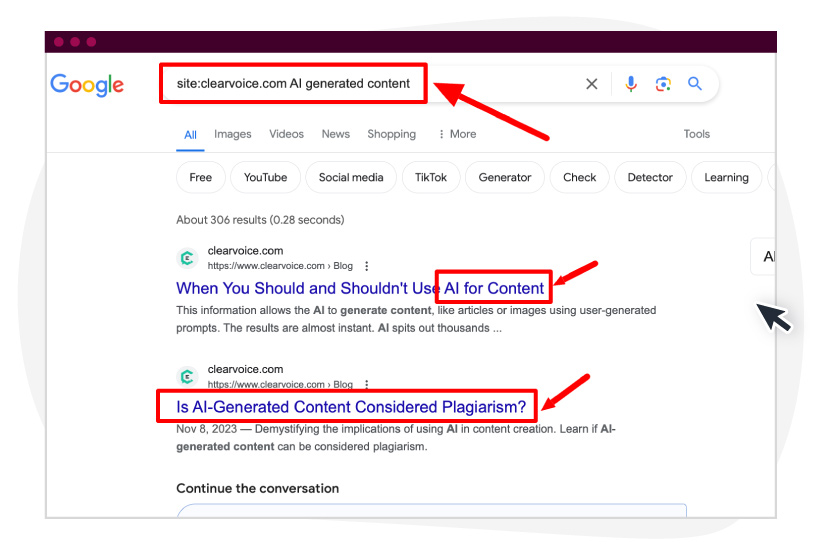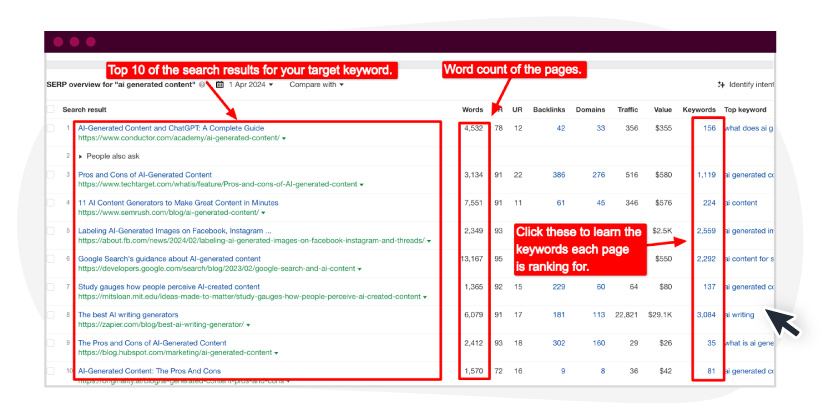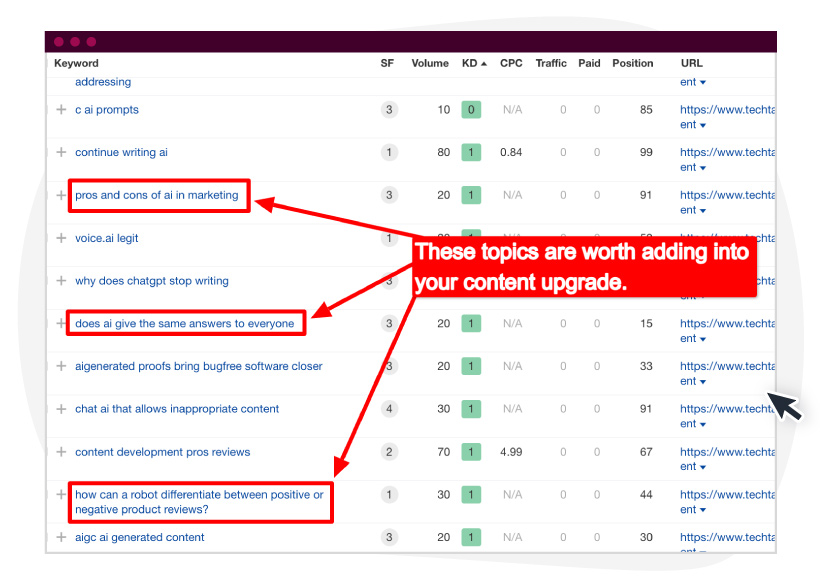User feedback and content audits are a match made in heaven.
Leveraging user feedback gives you crucial insights and actionable guidance for your content audits to ensure your adjustments lead to meaningful results.
Imagine this: You run a SaaS social media management company. Your G2 reviews show several users asking about mini landing pages or microsites for their social media profiles. With this information, you can check your website content to see if you’ve written anything about microsites and landing pages.
If you haven’t, then you need to cover them. If you currently cover the topics but your pages aren’t ranking on the search engine results pages (SERPs), you can upgrade or refresh your current pages. That’s just one of the many ways user feedback can work hand in hand to bolster your content audits and upgrades.
Understanding User Feedback
A better grasp of your user’s sentiments puts you in a better place to make smarter, more relevant, and more strategic decisions. That’s why user feedback is crucial. Essentially, it is the voice of your users.
The more you harness, analyze, and act upon user feedback, the clearer your guardrails for deciding how to run your content audits and upgrades will become. That bit is crucial since there’s a myriad of directions you can take when updating your content. For example, you can:
- Create new content clusters or simply build upon your existing ones.
- Add or delete sections to your existing pages.
- Incorporate fresh media and determine the appropriate media types to include
As you can imagine, deciding which direction to take can be confusing. Also, the directions above require lots of time and work.
That’s why you must equip yourself with crucial information about your audience before running your content audits. That way, you’ll have a better chance of zeroing in on the right direction. (And avoid wasting your time and resources with the wrong initiatives.)
There are several types of user feedback:
- Surveys. Surveys often contain several questions about a particular product, company, event, etc.
- Reviews. Some of the best places to obtain user reviews are review websites such as G2, Yelp, TripAdvisor, or even social media sites.
- Interviews. These can be podcasts or as simple as sending your users a questionnaire so they can answer them. Compared to surveys, which often occur at scale, interviews convey a sense of exclusivity because they occur one-on-one.
- Social media content. These can include posts, comments, short videos, etc. Anything your current or prospective users post about your company can be considered user feedback.
Benefits of Incorporating User Feedback into Content Audits
Below are some benefits from incorporating user feedback into your content audits.
- Align with user needs. It’s common for companies to assume their users’ needs falsely. For example, other companies might think their users need more instructional content when, in reality, they are looking for case-study-type pieces. Paying attention to user feedback and incorporating it into your audits drastically reduces your chances of making wrong assumptions.
- Convenience. Integrating user feedback into your content audits isn’t rocket science. It’s a reasonably straightforward process.
- Validate content strategy. If you’re unsure about your content strategy and you want to validate its relevance and efficacy to some degree, pay attention to your user feedback. If your content strategy directly addresses your users’ needs — information that you obtained from user feedback — chances are you’re on the right track.
How to Integrate User Feedback into Your Content Audits
Now that you have an overview of the types of user feedback and how it aids in content audits, let’s take a deep dive into how to integrate user feedback into your audits.
Step 1: Collecting user feedback
There are several ways to collect user feedback. You can use polls, surveys, email blasts, etc.
Choose a method that aligns well with your business dynamics. Consider your current assets, your method of engaging with your audience, and the platform your customers frequent, among other things. Let’s say you have a decent email list, and running a survey is the best method for collecting user feedback.
In this case, you can use Google Forms, which is free and intuitive. Because Google Form’s results can be viewed in Google Sheets, analyzing, managing, and storing your data becomes much easier.
The best part is that Google Forms has many templates you can leverage, so you don’t need to build your surveys from scratch.
Simply choose a template that best aligns with your survey, and then make adjustments to the template.
Google Forms allows some customization. You can change the form’s header and background to align with your brand image. Once your form is ready, start sending your surveys.
Bonus tip: To increase the number of survey participants, consider giving freebies and discounts, among other incentives that appeal to your users.
Step 2: Analyzing user feedback
Look for shared characteristics or patterns from the results of step 1. Pay extra attention to words or phrases that keep coming up since they are most likely important to the majority of your users.
Use the exact words your users entered in your Forms as much as possible. For example, if the survey revealed several users mentioning they’re unfamiliar with “AI-generated content” and how it can impact their business, you ought to bake that insight into your content audit to address it in your content upgrades.
Step 3: Integrating user feedback into content audits
Since you uncovered in step 2 that your users are concerned about “AI-generated content,” use advanced Google search queries to see if you have ample content about the topic.
Site:domain.com “AI-generated content.”
Here’s an example: site:clearvoice.com “AI-generated content”
In the search query above, Google will show the pages/posts on Clearvoice.com that mention “AI-generated content.”
As you can see from the example above, ClearVoice has several content pieces on AI-generated content. In this case, ClearVoice could update its existing content without producing new posts about the topic.
Best Practices for Integrating User Feedback into a Content Strategy
Use the best practices below to significantly enhance the integration of user feedback into your content strategy.
1. Use keyword research tools to get more insights
In step 2, where you analyze the results of your data collection initiatives, there’s a good chance you’ll uncover several phrases or topics.
For example, if you uncovered “AI-generated content” and “content distribution strategies,” you’d have to decide which of the two you should prioritize working on. After all, you’ve got a limited workforce, time, and resources.
Running your keywords through keyword research tools will give you a better grasp of the value you’ll get from your phrases.
Of course, you’ll want to prioritize more valuable phrases.
We ran both phrases in Ahrefs.com. Here’s what the tool revealed:
The phrase “AI-generated content” has a significant search volume (600 vs. 50). The keyword phrase “Content distribution strategies,” however, has better traffic potential and lesser difficulty (AI-generated content 52 keyword difficulty vs. content distribution strategies 56 difficulty score).
These are some of the many insights you can obtain from keyword research tools. Based on the data you acquire, you can start deciding which topics or upgrades to prioritize.
2. Segment feedback
Segmenting user feedback gives you a more accurate picture of how specific demographics respond to your content.
For example, if certain content pieces on your website target readers who are concerned about cost-effectiveness, the adjustments you make should align with that concern. On the other hand, other content pieces might be geared toward readers whose main issue is scaling their content operations. In this case, it makes sense to add points or tips about scaling rather than cost-effectiveness.
By segmenting user feedback, you can create more customized, personalized messaging in your content upgrades.
3. Benchmark against competitors
Suppose the phrase “AI-generated content” keeps appearing in your user feedback.
You can then check your website content to see if you’ve covered the topic. You notice you have one page about the topic but are unsure if you’ve added enough coverage.
The question is, how do you know what ideas or new sections to add to your existing content? This is where benchmarking against your competitors comes in.
Using SEO tools like Ahrefs can give you more insights into your competitors’ content. Go to Keywords Explorer, type in your keyword phrases, and hit Search. If you scroll to the bottom, you’ll see this:
There’s a lot you can do with the top search results from your target keyword, the total word counts of each page, and the number of clicks each keyword garnered to improve your content. Notably, if you click the numbers under the Keywords column, Ahrefs will show you the keywords for which the URL ranks.
Here’s an example:
Just by looking at the keywords, you can uncover topics or new sections to add to your existing content.
Boost Your Strategy with Seasoned Content Producers
While you can run the whole process of leveraging user feedback to bolster your content audits, there are steps, details, and elements you can easily miss. What’s more, running the whole process is time-consuming and tedious.
That’s where ClearVoice steps in. With the help of our seasoned content producers and marketers, harness user feedback and integrate it into your content audits.
Let our seasoned content producers and marketers develop a high-performing content strategy to boost the performance of your content marketing campaigns.


